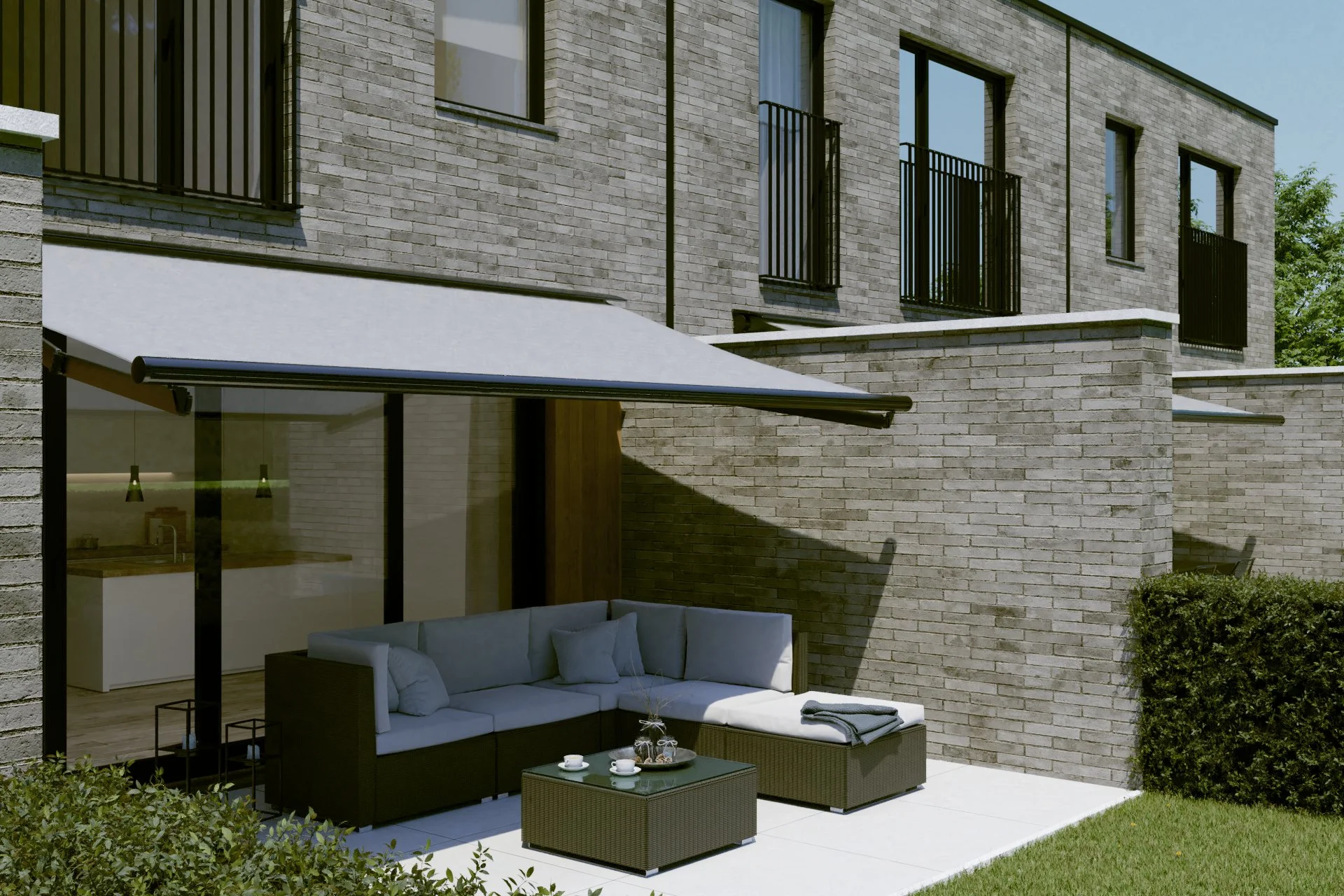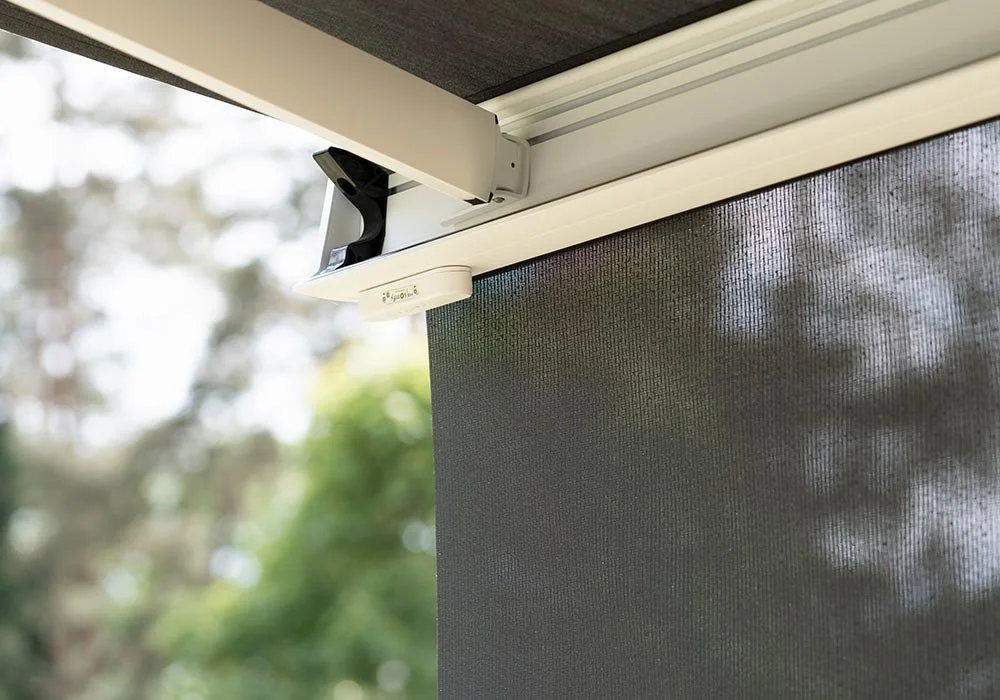Awnings vs Patio Shades: Which Wins the West‑Coast Weather Test?
(Campbell River & Comox Valley edition)
Why West‑Coast Weather is a Different Beast
Wind that whistles through Discovery Passage, sideways rain from a surprise squall, and 16‑hour summer daylight—all in the same week. Vancouver Island patios take a beating, and so do the shade systems that protect them. Before you invest, it pays to know how each product really handles our coastal conditions.
Quick Product Overview
(Fun fact: Habitat Screens can withstand sustained winds up to 200 km/h)
Weather‑Durability Showdown
Wind & Storm Resistance
Awnings are fair‑weather friends. Most manufacturers recommend retracting them at ~30 km/h; leave them out in a gusty squall and you might watch your investment cartwheel into the neighbour’s yard.
Habitat Screens thrive on wind. The captured track system locks the fabric edge‑to‑edge, so the screen flexes but never billows—even when exposed to 200 km/h winds.
Bottom line: If your deck faces the Strait and feels every nor’easter, the screen wins hands‑down.
UV & Heat Protection - inside the home
Awnings slash solar gain by shading the glass. In our tests, interior rooms cooled by 4‑6 °C on a summer afternoon.
Habitat Screens tackle heat two ways: they block direct sun and allow warm air to vent. When installed outside a window, screens cut indoor temps by an average of 11 °C on a summer day—impressive without sacrificing daylight.
Rain & mildew
Awnings shed light rain, but fabric needs to dry before you retract or mildew can form.
Screens are woven PVC or fibreglass mesh—quick‑drying and mildew‑resistant.
Maintenance & Lifespan in Coastal Conditions
On the coast, both systems benefit from a little seasonal TLC, but their upkeep is straightforward. Retractable awnings stay in top shape with a quick hose‑down and a gentle scrub using a soft brush; plan to re‑treat the fabric with a water‑repellent every three years and give the arm pivots and torsion bar a once‑over each spring. Habitat Patio Screens are even lower‑maintenance: a simple rinse (or a mild‑soap wipe if pollen builds up) keeps the mesh looking fresh, while an annual inspection of the side‑track seals and bottom bar ensures the captured‑track mechanism glides smoothly. Because salt air accelerates corrosion, it’s smart to rinse any exposed metal on both products a few times a season. Follow those basics and you can expect your awning or patio screens to last many many years to come.
Style, Curb Appeal & the View Factor
Awnings add a European café vibe and can match trim colours. The trade‑off? When extended, the canopy can slice off your sight‑lines to the garden.
Screens are practically invisible from inside. Choose 3 %, 5 %, or 10 % openness to fine‑tune privacy vs. panorama.
Pro tip: Want the best of both worlds? Pair an awning with a built‑in drop screen (yes, we carry them) so you can stop low‑angle sun without walling off the yard.
Feature extras worth noting
Beyond their core shade duties, the two systems come with very different upgrade paths. Retractable awnings can double as evening mood‑lighting when you add warm‑white LED strips along the folding arms—perfect for late‑night BBQs or patio wine time—, and you can add a drop screen for added privacy, but that’s about where the extras end. Habitat Patio Screens, on the other hand, unlock a trio of bonuses: the tight‑weave mesh locks out mosquitoes and no‑see‑ums for bug‑free lounging; oversize units can seal off a garage or workshop, giving you a breezy studio with privacy from passers‑by; and when screens are installed on two or three sides of a deck they create an instant three‑season room, blocking wind and drizzle while preserving the view. If lighting atmosphere is your priority, the awning wins; if you’re chasing insect control, multi‑use space, and full‑patio enclosure, the screen brings far more to the table.
When to choose each option
Pick an awning if you…
Crave broad overhead shade for midday lounging.
Want to keep the hot sun off while still feeling the breeze.
Love café‑style ambience and optional LED strip lighting.
Have a semi‑sheltered yard where high winds aren’t common.
Pick a Habitat Screen if you…
Face frequent wind gusts or open water exposure.
Need heat, UV, and glare control without losing the view.
Plan to enclose a patio, pergola, or garage bay for bug‑free evenings.
Value privacy from neighbours without heavy curtains or fencing.
Want to reduce the temperature in your home without sacrificing your views.
Still torn? Many homeowners combine the two: an awning for overhead shade plus a side‑mounted screen for low‑sun and wind. We’d be happy to show you layout ideas.
Ready to weather‑proof your deck?
Book a free on‑site consult and we’ll bring fabric swatches, wind‑load data sheets, and cost comparisons. Whether it’s a motorised awning, a Habitat Screen, or a clever combo, we’ll make sure you can relish your outdoor space—no matter what the West‑Coast weather throws at it.








